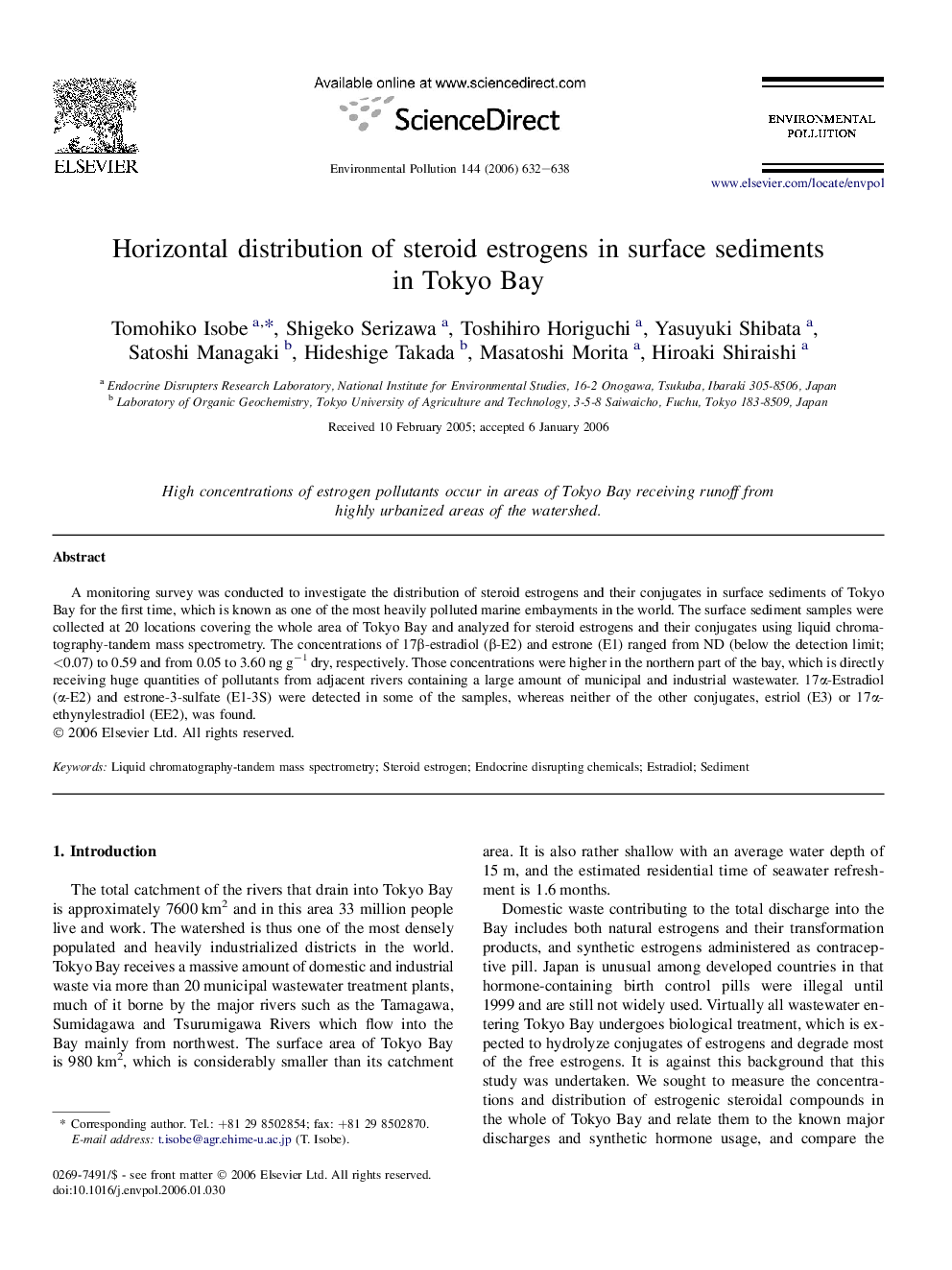| Article ID | Journal | Published Year | Pages | File Type |
|---|---|---|---|---|
| 4427787 | Environmental Pollution | 2006 | 7 Pages |
A monitoring survey was conducted to investigate the distribution of steroid estrogens and their conjugates in surface sediments of Tokyo Bay for the first time, which is known as one of the most heavily polluted marine embayments in the world. The surface sediment samples were collected at 20 locations covering the whole area of Tokyo Bay and analyzed for steroid estrogens and their conjugates using liquid chromatography-tandem mass spectrometry. The concentrations of 17β-estradiol (β-E2) and estrone (E1) ranged from ND (below the detection limit; <0.07) to 0.59 and from 0.05 to 3.60 ng g−1 dry, respectively. Those concentrations were higher in the northern part of the bay, which is directly receiving huge quantities of pollutants from adjacent rivers containing a large amount of municipal and industrial wastewater. 17α-Estradiol (α-E2) and estrone-3-sulfate (E1-3S) were detected in some of the samples, whereas neither of the other conjugates, estriol (E3) or 17α-ethynylestradiol (EE2), was found.
